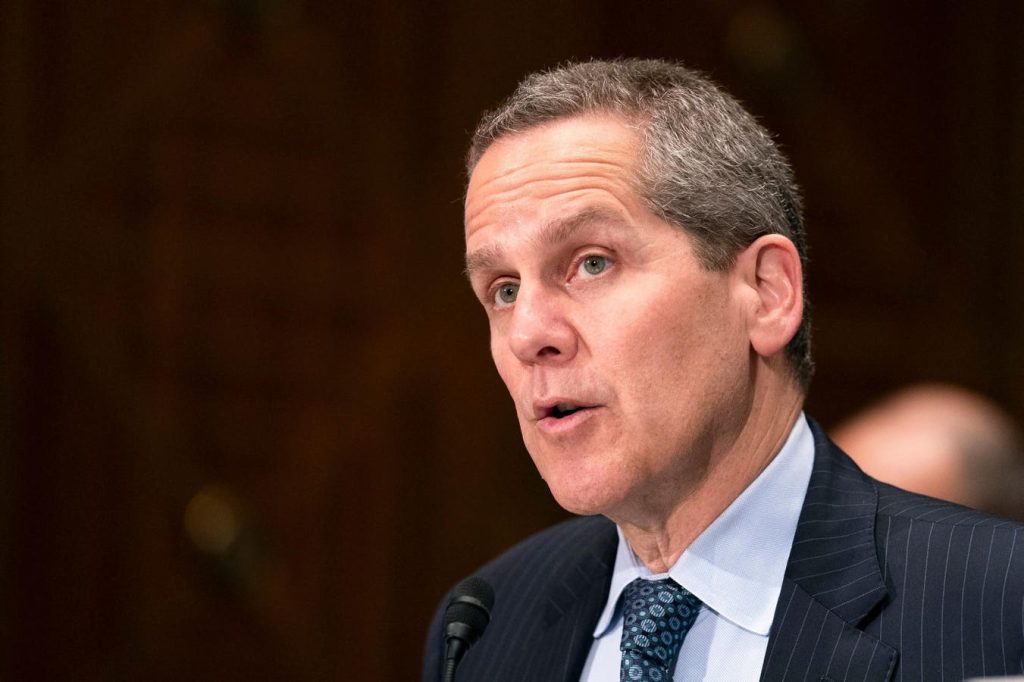The Federal Reserve recently released its annual bank Stress Test results, revealing that 31 major U.S. banks with at least $100 billion in assets all passed, with each bank exceeding its minimum capital requirements during a hypothetical recession.
The major banks saw higher hypothetical losses in the latest Test, in which this year’s “severely adverse” scenario predicted a 10% increase in U.S. unemployment, a 55% loss in equity prices, and a 40% drop in commercial real estate prices. As with the previous year, a subset of banks with big trading businesses experienced an additional “global market shock” component that included equity price drops, a sharp rise in short-term U.S. Treasury yields, and a weaker dollar.
While no bank appeared to be significantly knocked off course this year which used approximately the same assumptions as the 2023 Test, the group’s aggregate capital levels decreased 2.8 percentage points, worsening the decline from last year. Still, the group’s common equity Tier 1 capital, the highest-quality regulatory capital, would bottom out at 9.9%, well above the 4.5% minimum requirement, regulators pointed out.
Michael Barr, Vice Chair for Supervision of the Board of Governors of the Federal Reserve System, ascribed the increased losses this year to higher credit card balances and delinquencies, riskier corporate credit portfolios, and a combination of higher expenditures and lower fee revenue in recent years, which resulted in less net income to offset losses. These three criteria “suggest required capital buffers should be larger.”
SUPER REGIONALS NOT TO BE OVERLOOKED
Given that I prefer to target a diversified approach to ownership of banks of varying sizes with a variety of capabilities, I also think investors should give Citizens Financial Group (CFG) and Fifth-Third Bancorp (FITB) a look.
Citizens, which passed the Fed’s Stress Test with the second-lowest projected capital level out of the 31 banks tested, announced it would more than double the size of its share buyback plan. The Providence, Rhode Island-based company also said that its stress capital buffer increased from 4.0% to 4.5%.
CFO John Woods said in a statement that the Fed’s test modeled a decline in pre-provision net revenue, a common profit metric in the industry, that was much worse than what Citizens projected in its own self-exam. The $220.4 billion-asset bank said that it expects its upcoming Q2 CET1 ratio to be 160 basis points above its regulatory minimum of 9%. Citizens didn’t mention a shift on dividends but said it will “assess potential changes to its capital distributions as conditions warrant.”
Fifth Third announced that it plans to recommend a two-cent per share increase to its quarterly cash dividend on its common stock in September, “consistent with its planned capital actions submitted to the Federal Reserve.” The Ohio-based bank’s stress capital buffer ticked up from 2.5% to 3.2%, but the bank noted that its CET1 ratio of 10.5% is well above its required minimum, which as of last year was 7%.
CFG trades for less than 12 times estimated EPS and yields 4.4%, while FITB trades for less than 12 times NTM earnings and yields 3.6%.
This is a condensed version of weekly commentaries available to subscribers of The Prudent Speculator. The Prudent Speculator’s content is curated each week as a valuable resource for recent stock market news, investing tips and economic trends. To receive regular reports like this one, sign up here: Free Stock Picks – The Prudent Speculator.
Read the full article here










